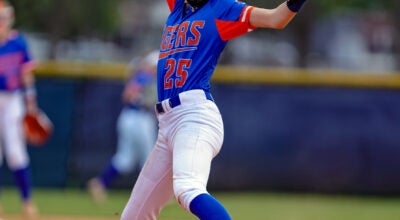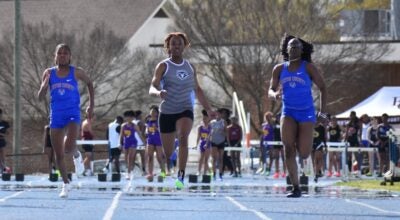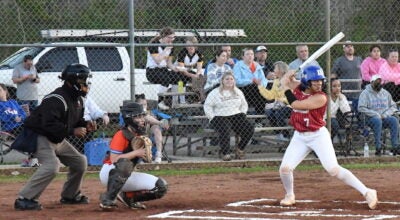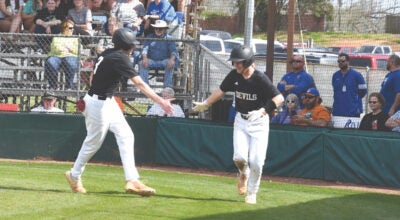Economy, learning curve hurting open-wheel drivers
Published 1:18 pm Wednesday, October 1, 2008
KANSAS CITY, Kan. (AP) _ AJ Allmendinger won’t be driving for Red Bull Racing next season, giving up his seat for the final seven races to look for a job.
Patrick Carpentier is treating the final seven races like an audition, hoping to find another Sprint Cup car to drive.
Former Indy 500 champ Dario Franchitti didn’t even make it this far, losing his ride in July, shifting back to the Indy Racing League a month later.
It’s been a difficult run for former open-wheel drivers in NASCAR this year, a sharp learning curve, tough economic times and a win-now mentality leaving some wondering what the future holds.
“That’s the sport itself now, that’s just the way it is,” Allmendinger said last weekend at Kansas Speedway. “You look at an open-wheel guy, that if you don’t come over and perform right away it’s tough. But it’s not just an open-wheel guy — everyone has to go out and perform as soon as they get in the car.”
It hasn’t been easy for most of the open-wheel guys.
Three-time IRL champion Sam Hornish Jr. has struggled his first full season in Sprint Cup. He has a career-best finish of 13th at Charlotte in May, but is ranked 35th in the standings headed into this weekend’s race at Talladega.
Franchitti, the 2007 IRL and Indy 500 champion, raced in just 10 Cup events and missed five others with a broken foot. He dropped out of the top 35 in points and failed to qualify for a handful of races before owner Chip Ganassi shuttered his team. Franchitti lingered in lower-tier NASCAR events for a little while before deciding on a return to the IRL.
Jacques Villeneuve didn’t even get that far. The former Formula 1 champ and 1995 Indy 500 winner left Bill Davis Racing after crashing in a qualifying race for the Daytona 500.
Carpentier plans to stick it out a little longer.
The former Champ Car driver has had his share of troubles making the adjustment from the easy maneuvering of open-wheel cars to hard-driving Sprint Cup cars. He failed to qualify for four races and is 37th in the points.
Still, he’s shown signs of becoming comfortable in the much-larger stock cars, earning the pole at the first New Hampshire race and leading eight laps this season.
The problem for Carpentier now is that his No. 10 Dodge at Gillett Evernham Motorsports will be driven by Reed Sorenson next season. Though the Canadian has a Nationwide ride lined up for next season, he’s hoping a strong finish to this season will get him back in a Cup car.
“It’s very important we do well,” Carpentier said. “I’m working as hard as I can to help set up the car and get all the information I can to them to make it the best I can. We’ll see what happens. It’s out of my control. I can control what I do on the track and try to make the best of it, let them decide what they want.”
Allmendinger is in a similar position.
The 26-year-old made the switch from Champ Cars in 2007 and showed flashes of promise, finishing 15th at Lowe’s Motor Speedway in October, starting fifth at Texas in November. Allmendinger continued to make strides this season, finishing 10th at Indianapolis, a career-best ninth this past weekend at Kansas.
Still, he finds himself without a job; Red Bull announced he won’t be with the team next year and Allmendinger gave up his ride for the final seven races to look for a job. He’s been contacted about returning to open-wheel racing, but wants to stick it out in NASCAR — if he can.
“We’re not going to rush the decision to make sure we’re employed. I don’t want to make the wrong decision,” he said. “The next step I take, the next team I go to is very critical in my development as a race car driver and that’s something you’ve got to take wholeheartedly and not make a quick decision.”
So why are the open-wheel guys having so much trouble?
Some of it is the cars.
IndyCars weigh about half as much as Sprint Cup cars, have far less horsepower, larger tires and much more downforce to keep them on the track.
“It’s a different world,” Carpentier said. “You need to drive them hard all the time, even if it’s in the straightaway and when you’re in traffic the thing moves around. Contrary to what people think, you’ve got to be a lot smoother with these. With the other ones (IRL cars), you’ve got so much downforce you can play with it quite a bit, but these things you’ve just got to be aggressive but baby it all the time.”
Most of all, the open-wheel guys have been hit by economics. Rising operating and fuel costs have made it more difficult to run a team and sponsors have been dropping out or cutting back because they don’t have the money to throw around anymore.
Teams are cutting back and it’s leaving some good drivers — Allmendinger and Carpentier among them — searching for rides.
“It’s a marketing thing: sponsorship, marketing, the image that they want, the image they want to put in the car,” Carpentier said. “That’s just how it works, especially now with the economy. You’ll see it more next year. You see it this year, but next year it will be tough to get 43 cars.”






